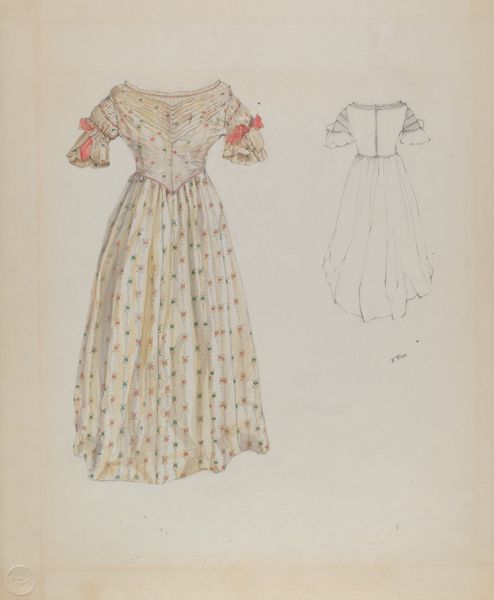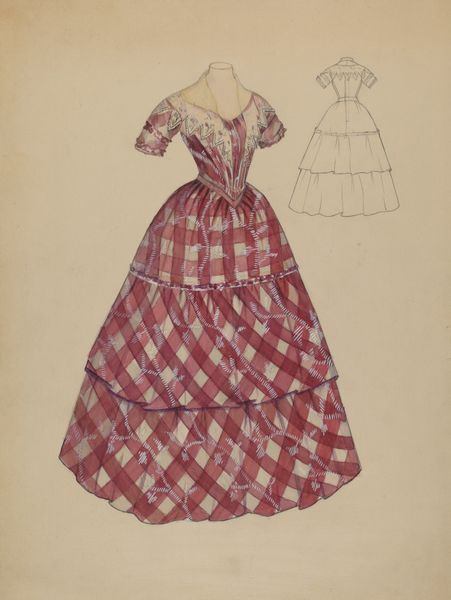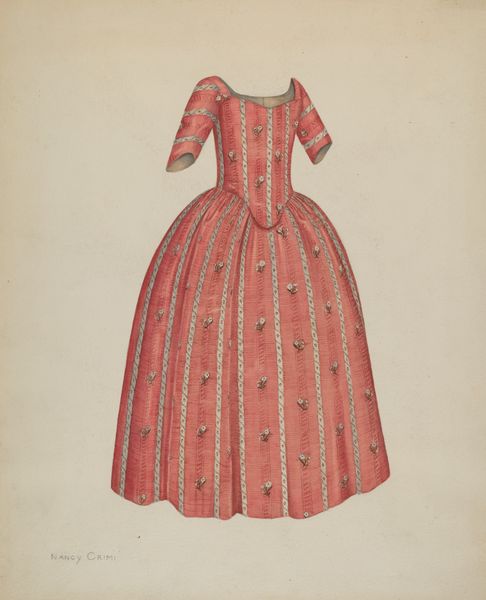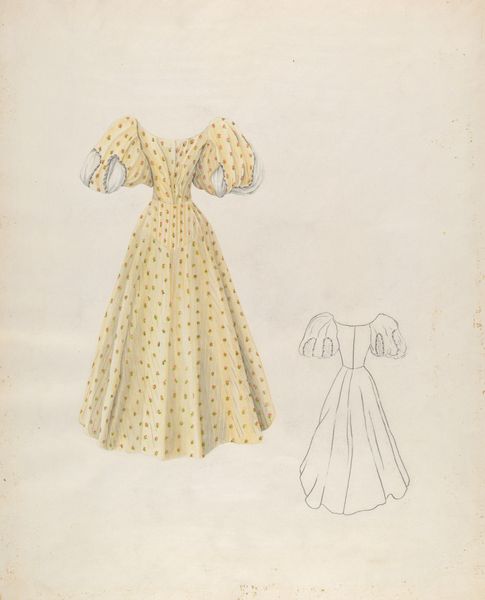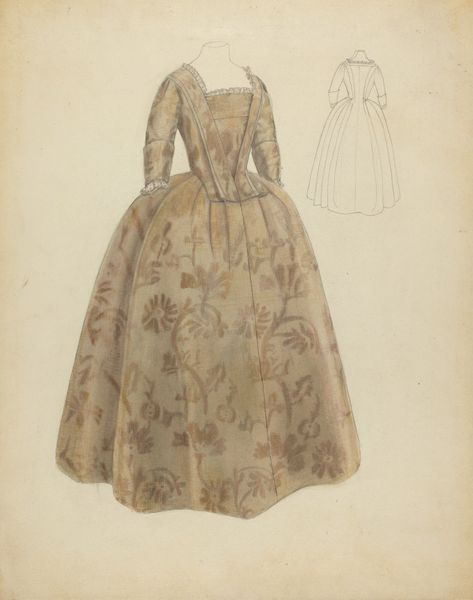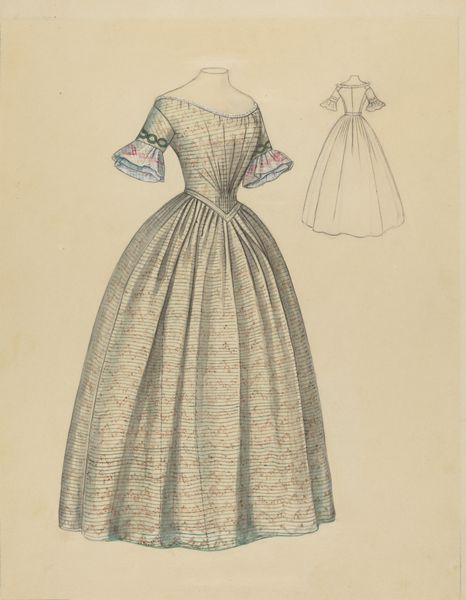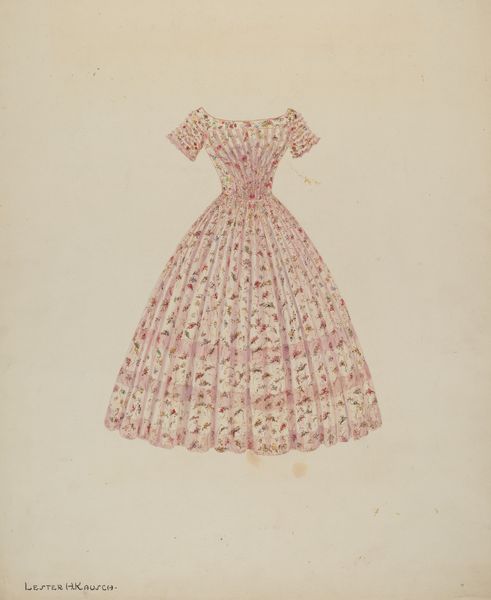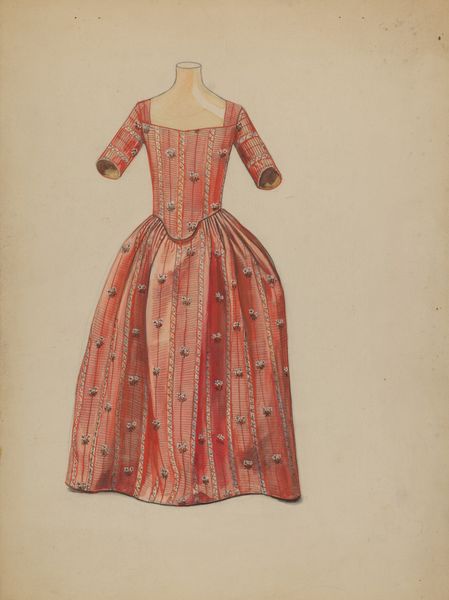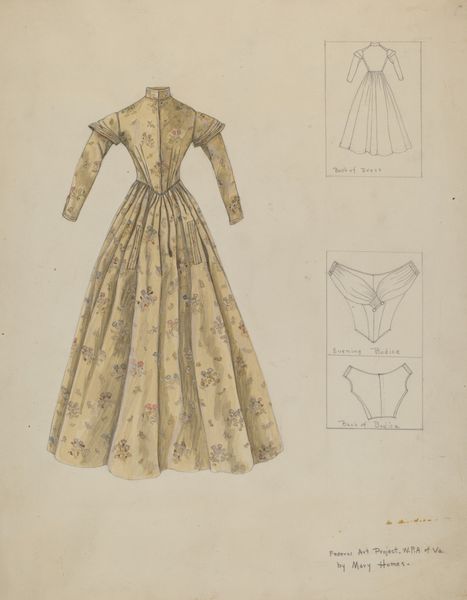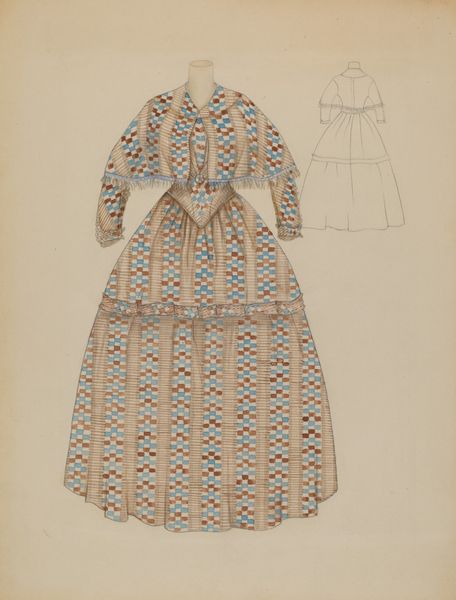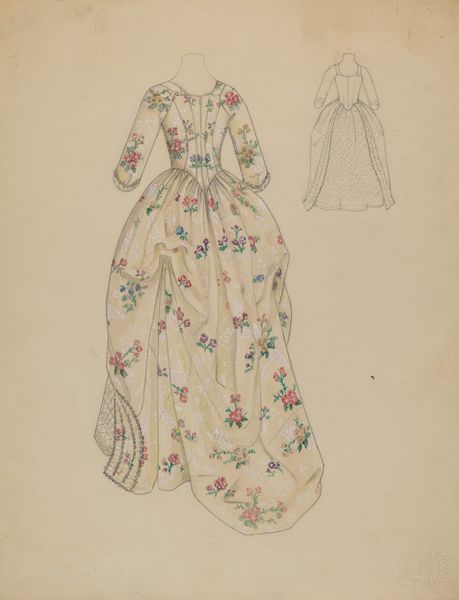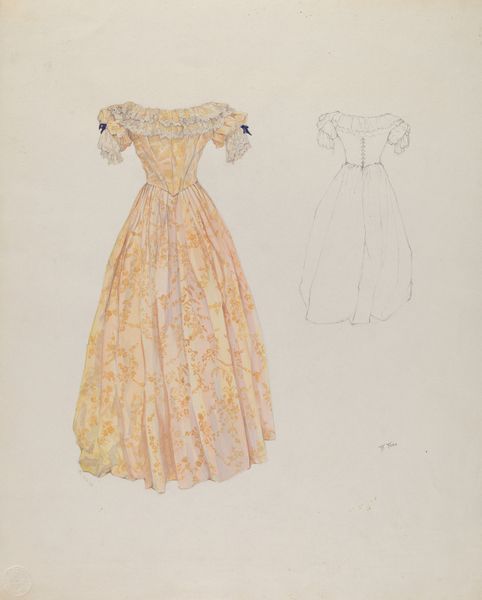
drawing, paper, watercolor
#
drawing
#
water colours
#
paper
#
watercolor
#
historical fashion
#
watercolour illustration
#
history-painting
Dimensions: overall: 41.3 x 33.2 cm (16 1/4 x 13 1/16 in.)
Copyright: National Gallery of Art: CC0 1.0
Curator: This drawing is called "Afternoon Dress," dating to around 1937. It's watercolor on paper. What are your initial thoughts? Editor: It has a certain delicacy. The pastel palette, the light fabric...there's a sense of restrained elegance that I associate with that era. And there's something interesting in that contrasting image beside the complete one: you can clearly distinguish the work in its stages. Curator: Absolutely. This piece, viewed through a feminist lens, reflects the performative aspects of femininity dictated by society at the time. Consider the restrictive silhouette, designed to enhance the waist and emphasize demureness. Editor: It’s interesting that you mention restriction. I see how the dress both defines and confines the female form through the materials, how those choices intersect with the labor involved in the design and, of course, eventual manufacturing, particularly considering how textiles impacted the workforce. Curator: Precisely. The creation of these garments was intrinsically tied to a gendered division of labor, impacting countless women, and also highlighting the complexities of labor rights and gender equity movements during the interwar period. Editor: And it's not only the finished garment that embodies labor. It's also the materials, the dye. The way the cotton breathes or fails to. Each carries its own legacy. Did Ray Price make more such design concepts available to the public? Curator: Ray Price created a substantial archive, allowing us today to contextualize this individual piece within the broader visual culture and evolving ideals of femininity in the early 20th century. Price was a commercial artist, so what social roles or statements might be being represented through this piece? Editor: It does suggest a very controlled aspiration, the garment appearing lightweight but it may prove fragile. Looking closer, there's a tension between art and utility. How it will appear when it gets released for mass consumption. Curator: Exactly. The power structures embedded in design, from production to consumption, speak volumes about societal expectations of gender. Editor: Seeing these subtle watercolor details allows me a deeper dive into materiality. Appreciate your insight. Curator: And the same to you; it’s enlightening to reconsider historical constructs that, in effect, are still being unpacked today.
Comments
No comments
Be the first to comment and join the conversation on the ultimate creative platform.
